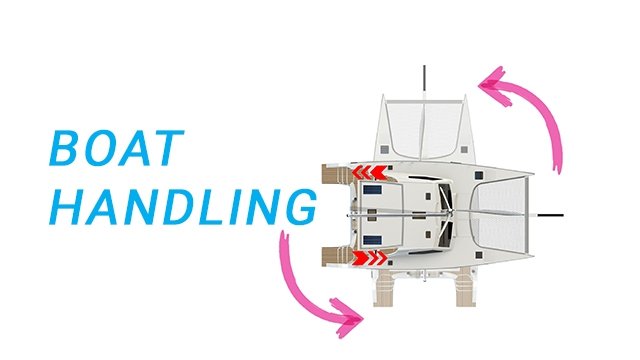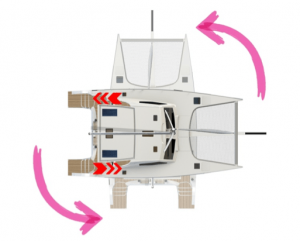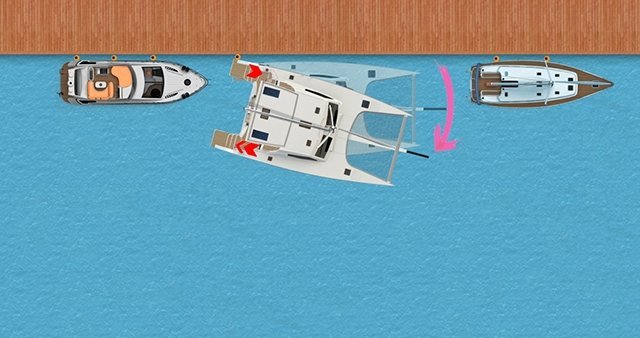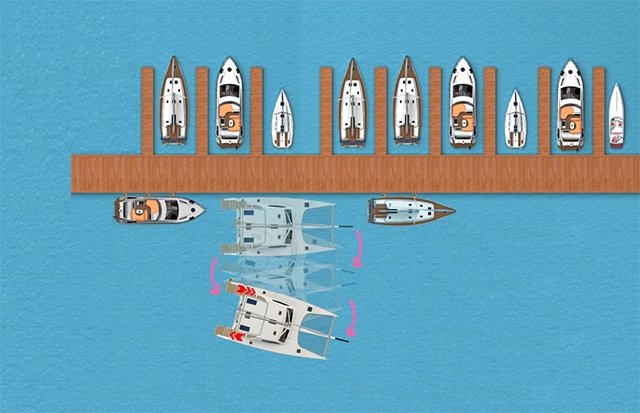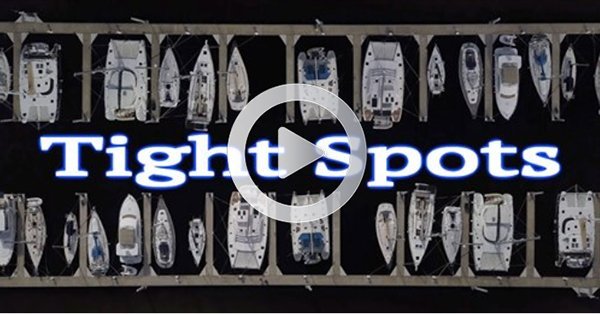Here’s an excerpt of our recent article on boat handling for catamarans. The original piece, in entirety, can be found in our 2018 Seawind Cruising Club Magazine. Download a copy here.
Of the numerous benefits of owning a catamaran, one which simply cannot be overlooked is the control advantages offered with a dual engine setup as found in most modern cruising catamarans. And while the redundancy of twin engines is a huge bonus for any serious sailor, you simply have to admire the maneuvering possibilities offered in this simple setup.
Turning in Tight Quarters.
When the need arises you can turn your catamaran in a 360 degree spin within its own boat length. When entering a crowded marina at slow speeds, hold the rudders on center and use the engines to steer the boat through to the boats berth. To turn to Starboard, apply more throttle to the Port engine and vise versa (again, resisting any urge to touch the rudders). To perform a hard turn to Port, increase the Starboard throttle forward and push the Port throttle into reverse.
Pushing Off.
You’re berthed with your Port side-to and have boats tightly packed in front and behind. You are going to need to swing the bow out, clear of the boat ahead before motoring away from the marina. To do this, ensure you have a good fender tied off your rear quarter, you are going to use this to pivot the boar away from the dock. First push the Port throttle into forward at low speed and then engage the Starboard throttle in reverse at a low-medium throttle. Adjust both throttles back and forth to balance the boat in its static position while the bows pull away from the dock. If you are not confident in your abilities to do this unaided, wrap a spring line from the aft cleat to the dock and then back to the boat. Adjust this to prevent the boat from travelling backward and then release once the bow is clear of the boat ahead.
Berthing.
When entering a slip at your marina, the best way by far is to back the cat into the slip rather than entering bow first. On a Seawind the steering station is slightly aft, and outboard which provides better visibility when backing in. You also have twin helms and if dual controls are optioned, favor the side closest to the dock as it is important to keep a close eye on the distance between you and the dock. In tight quarters drive the boat along the pens as you approach your berth then as you would when reverse parking a car turn the bows away from the slip. It is best to then bring the boat to a complete or near stop before engaging in the reverse maneuver. Put the engines into reverse applying more throttle to the side furthest from the dock. Ensure your fenders are out and dock lines prepared. Slowly back the boat into the slip until you can throw your stern line to shore crew or loop onto the aft dock bollard yourself. Be sure to disengage the throttle before doing so and ensure the boat has come to a stop. You can then attach a bow line and shut down both engines.
Crab Walk.
Through steady throttle control you can actually maneuver your catamaran sideways off a dock. The boat will shuffle sideways crab-like. To start, follow the same steps as if you were pushing off, as described in the previous section. Next, rather than engaging both engines in forward you will reverse the throttle orientation and continue to alternate the throttles from (Port-forward / Starboard– reverse) to (Starboard- forward / Port- reverse) combinations applying more throttle to the side furthest from the intended turn direction. In doing so, you will move the bow outward in one movement and the transom outward in the other and so on.
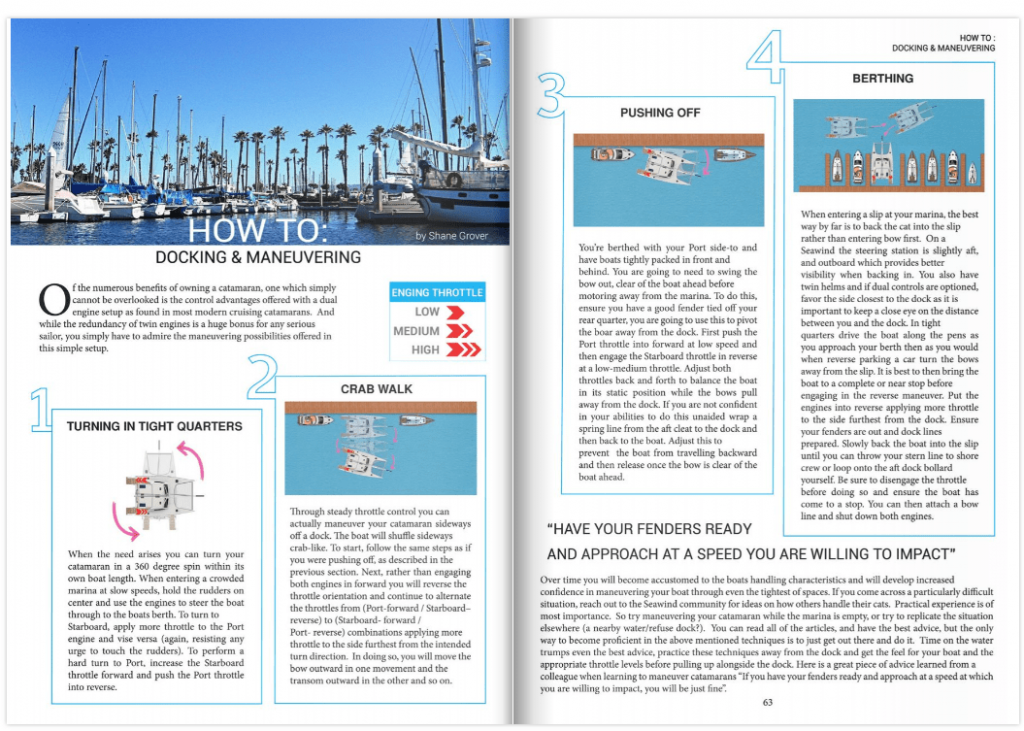
Here’s the CATAMARAN DOCKING video that walk you through each step slowly:
